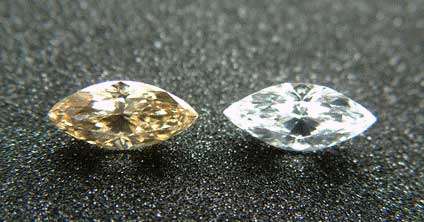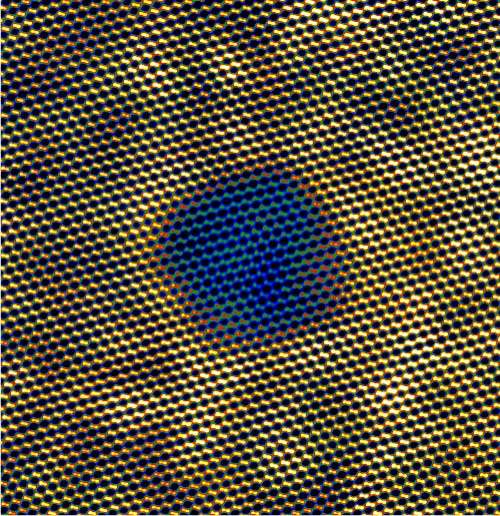Untreated brown and treated colourless diamond. Credit: De Beers
Diamonds come in all colours with price tags to match - ice-white, blue and pink attract high prices and stones with brown hues the least. But now that brown diamonds can be heat-treated to remove the darker colour to produce near-perfect colourless gemstones, can consumers tell the difference?
Researchers, supported by De Beers UK, have used the powerful SuperSTEM electron microscope based at the Science and Technology Facilities Council's (STFC) Daresbury Laboratory in Cheshire to study why brown colour occurs in diamonds and what happens to heat-treated stones.
Dr Iain Godfrey carried out the research as part of his PhD at the University of Manchester. He examined the atomic structure of brown diamonds before and after heat treatment to analyse defects inside the diamonds in the form of clusters of missing atoms.
For the first time structural changes or 'voids' within the diamonds were seen, proving existing theories that these 'voids' were linked to the colour of diamonds.
Dr Godfrey says: "This research has been made possible through SuperSTEM, an extremely sensitive scanning transmission electron microscope" (STEM) which uses an electron beam to probe and image the atomic image structure of the diamond. We've discovered that the brown coloured stones possess many minor imperfections which are absent from the colourless stones."
He continues: "These imperfections all add up to alter the way in which the diamond absorbs certain wavelengths of light and this is the fundamental difference between the two stones."
David Fisher, Principal Scientist from De Beers said: "Understanding the processes taking place within diamonds will help us to develop techniques to detect whether diamonds have been heat-treated. Fundamental research at an atomic level is becoming part of work that helps ensure that when someone buys a diamond they can be confident in their purchase and reassured that treatments are fully disclosed."
Void in diamond. Credit: Iain Godfrey
Provided by Science and Technology Facilities Council
























